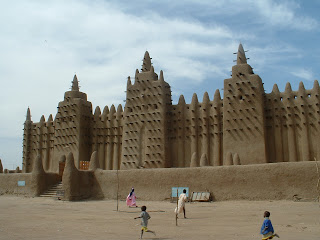 Timbuktu is a city of Mali in West Africa which lies at the south of Sahara Desert and at the north of River Niger. It is one of the eight administrative regions of Mali with a population of 54,453. It was not until 12th century when Timbuktu became a permanent residential area. It was a center of trading and became a part of Mali Empire. Timbuktu used to be known as a city made of gold.
Timbuktu is a city of Mali in West Africa which lies at the south of Sahara Desert and at the north of River Niger. It is one of the eight administrative regions of Mali with a population of 54,453. It was not until 12th century when Timbuktu became a permanent residential area. It was a center of trading and became a part of Mali Empire. Timbuktu used to be known as a city made of gold.With time, the city was being deserted. Serious initiatives were being taken in order to protect the history. Tourism, on the other hand, was an important sector and source for city’s income.
When the city was in its golden age, many of the famous Islamic Scholars started a book trade. The center of all campuses was the Sankore Mosque, an Islamic university, which was recognized as the center of scholars in Africa.
Shabeni and Leo Africans wrote a lot about Timbaktu which created an image of a suspicious and mysterious land of Timbuktu. Hence the city, even today, is taken as an outlandish place.
In 1988, WHC (World Heritage Committee) selected few parts to be a part in world heritage list. Selection was being done keeping in mind following points. The holy places of Timbuktu were important to early Islamization. Golden age of Songhay Empire was being shown by the culture of mosques of Timbuktu.Sankore mosque was built during 15th century A.D. A pyramidal mihrab is an architectural symbol of the mosque.
In 988 A.D. the real foundations were being laid. According to a plan of a rich lady, Sankore Mosque was planned to be the world class institution for learning. Al-Qadi Aqib ibn Mahmud ibn Umar had built the mosque courtyard with exact dimensions of Qaaba.
The mosque soon became a library for merchants from North Africa and Middle East. These books became more valuable and precious than any other thing in the city. It became a Madrassa (Islamic school) with largest collection of books. The quality of education was best among all other Madrasses. 25,000 students can enroll in university at one time. The primary purpose of was teaching of the Holy Quran to students. However the university was being greatly affected by Morroco invaded in 16th century.







No comments:
Post a Comment